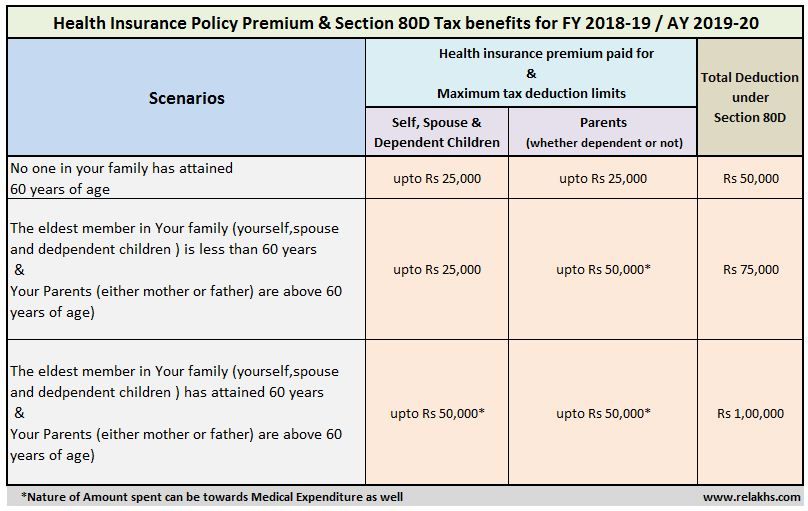First trimester with twins
Twin Pregnancy Week by Week
So, you’ve hit the jackpot—you’re pregnant with twins! While you’re adjusting to this life-changing news, your little ones are already growing and preparing to meet you! As you embark on this double adventure, it can be helpful to know about some of the common twin pregnancy symptoms that may await you week by week.
Twin Pregnancy: First Trimester
In the first few weeks of your twin pregnancy, you might notice some typical signs of early pregnancy, such as breast tenderness, fatigue, nausea, and a missed period. During your first trimester, a home pregnancy test can confirm your hunch that you're pregnant, and eventually an ultrasound scan at your healthcare provider's office will reveal you are pregnant with twins.
Although the first few weeks are a little uneventful, the first few months are quite exciting! Both of your babies develop from a cluster of cells to a tiny fetus with a heart, spinal cord, head, and limbs.
Read on to learn about twin pregnancy development and symptoms, week by week during the first trimester.
3 Weeks
After the first three weeks of pregnancy, you may start to feel a few pregnancy symptoms. And when it comes to a twin pregnancy, there’s quite a lot going on in that belly of yours, which is now nurturing either identical or fraternal twins.
Identical twins. When a sperm fertilizes an egg, it becomes a single cell called a zygote, which has 46 chromosomes that determine your baby’s sex and physical traits. When you have one zygote that splits into two during early pregnancy and grows into separate embryos, you’ll have identical twins. Because they come from the same zygote, they will have the same chromosomes and be the same sex.
Fraternal twins. If you have two zygotes, from two eggs fertilized by different sperm, these twins will not be identical and can be either the same or different sex. Fraternal twins are more common than identical twins.

4 Weeks
At around 4 weeks pregnant, some important developments occur, including implantation. This is when you may notice one of the first symptoms of pregnancy, which is implantation bleeding.
Implantation in the uterus. Around eight or nine days after fertilization, the rapidly dividing ball of cells, now known as a blastocyst, will burrow into the lining of the uterus. Each blastocyst, two in the case of a twin pregnancy, will grow into an embryo.
The placentas begin to grow. About one week later, the outer layer of the blastocyst will begin to form a placenta for each baby, providing nourishment over the course of your pregnancy. In some rare cases, the babies may share one placenta.
5 to 8 Weeks
When tracking pregnancy symptoms week by week, whether with one baby or twins, 5 to 8 weeks pregnant is when nausea and vomiting—aka morning sickness—might kick in. Though the precise cause or causes of this condition are unknown, the pregnancy hormone human chorionic gonadotropin (hCG) may be a contributing factor.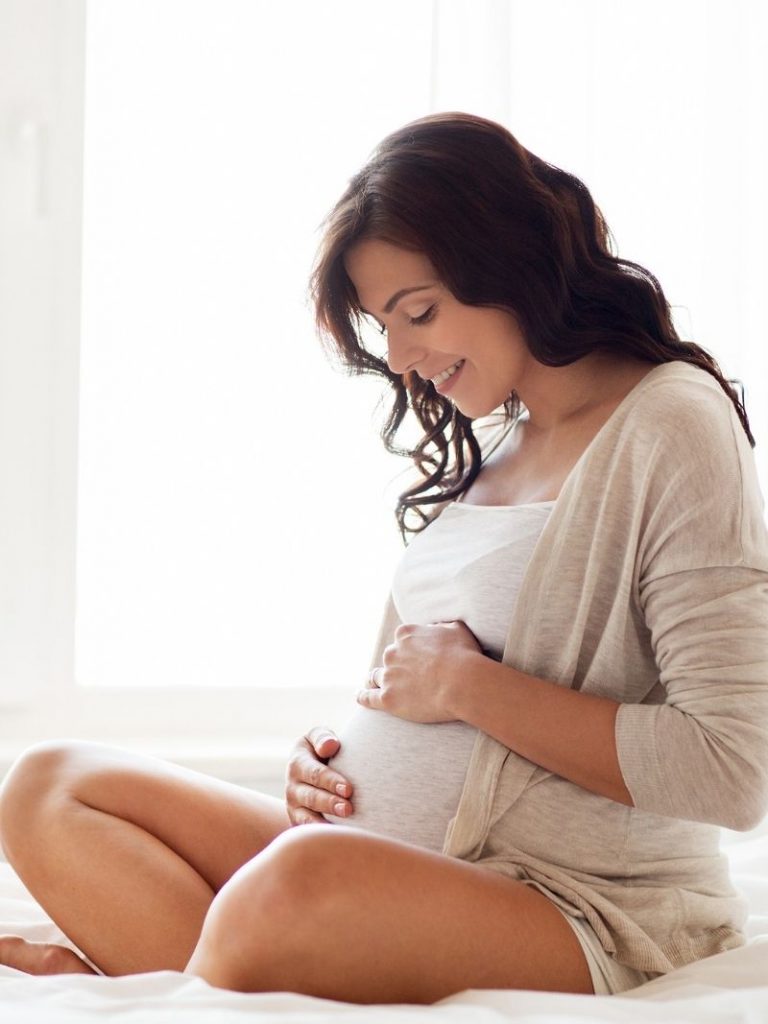 No one loves having this unpleasant symptom, which can be (but isn’t always) more severe during a twin pregnancy, but many moms-to-be choose to think of it as a sign that their pregnancy is going well! This is important considering all the growth and development your babies are experiencing during this time:
No one loves having this unpleasant symptom, which can be (but isn’t always) more severe during a twin pregnancy, but many moms-to-be choose to think of it as a sign that their pregnancy is going well! This is important considering all the growth and development your babies are experiencing during this time:
Your twins start forming brains and spinal cords. Around 6 weeks, your babies’ spinal cords and brains will develop from the neural tubes.
Little arms and legs start to form. By 8 weeks of your twin pregnancy, your babies will have buds for limbs that look like little paddles.
Two heartbeats. The tissues that form your babies’ hearts will begin to develop at this time. Heartbeats may even be detected during an ultrasound exam offered by your healthcare provider during this trimester. Ultrasound is the way most women find out they are pregnant with twins, often at around 12 weeks of pregnancy.
All major organs take shape.
 By the end of 8 weeks, all your babies’ major organs will have started to develop.
By the end of 8 weeks, all your babies’ major organs will have started to develop.
9 to 13 Weeks
As you enter the final weeks of the first trimester, you may be surprised to learn what’s happening in that baby bump of yours.
Fingers, toes, and nails begin to appear. Your tiny duo will start to develop fingers, followed by little toes taking shape; by 12 weeks, fingernails will also begin to sprout.
Facial features take shape. Twelve weeks into your pregnancy, your twins’ faces are less broad and more defined. Your babies will have eyelids and a more developed profile, with a formed nose, eyes, and upper lip.
Tooth buds form. Your babies’ future teeth are already in place, as tooth buds have appeared under the gums.
Your Twin Pregnancy in the Second Trimester
Twin pregnancy symptoms, when tracked week by week, aren’t too different from those in a singleton pregnancy. However, twin moms-to-be usually show their bumps sooner, and during the second trimester, it will become increasingly obvious that you’re pregnant with twins. You might also feel more uncomfortable and tired than singleton moms during this time or gain more weight, which is completely normal—after all, your body is a nourishing home to two developing babies!
Read on to learn about twin pregnancy development and symptoms, week by week during the second trimester.
However, twin moms-to-be usually show their bumps sooner, and during the second trimester, it will become increasingly obvious that you’re pregnant with twins. You might also feel more uncomfortable and tired than singleton moms during this time or gain more weight, which is completely normal—after all, your body is a nourishing home to two developing babies!
Read on to learn about twin pregnancy development and symptoms, week by week during the second trimester.
14 to 17 Weeks
The beginning of your second trimester is a busy time for your babies. They’re gaining weight and becoming more active. As for you, you’re entering what’s known as the golden period of pregnancy, when morning sickness and fatigue finally start to subside, and you feel more energized.
Limbs will move. Your babies will start to jerk their arms and legs, but you probably won’t be able to feel anything until they’re a bit bigger.
Bones start to harden.
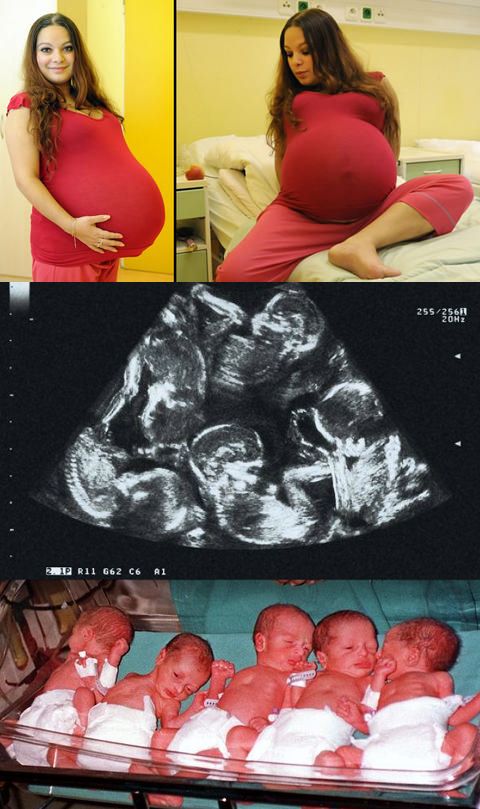 The bones of your twins will begin to harden, particularly the head and long bones.
The bones of your twins will begin to harden, particularly the head and long bones. Little eyes may move. Although their eyes are still closed, at 16 weeks, your babies can slowly move their eyes behind the lids. Your little ones should also have eyebrows and eyelashes at this point, too.
A protective coating forms on the skin. Your babies will start to acquire a greasy, waxy coating known as vernix, which helps shield their skin from the amniotic fluid.
18 to 22 Weeks
A few new aches and pains could crop up at this time, thanks to your growing uterus and hormonal changes. To help ease the discomfort, try adding some exercise to your daily routine, if your healthcare provider gives you the OK. Exercising while pregnant may not only minimize discomfort but also help boost your energy level and increase blood circulation, which benefits your twins.
Your twins may suck their thumbs. Your growing duo will develop the sucking reflex and may even suck their thumbs.

Your babies get active. During these weeks you may detect some gentle fluttering or wriggling. Before long, these movements will morph into kicks and jabs!
Your babies can hear. By 18 weeks, your babies may even begin to hear, and their ears will begin to stand out at the side of the head.
Your babies grow hair. Just after 20 weeks, your babies will be covered with a fine, downy protective hair called lanugo. Not only that, your little ones are also continuing to grow eyebrows and hair on their heads!
23 to 27 Weeks
You may start to develop some new symptoms as your twin pregnancy progresses week by week in the second trimester. For example, it’s possible to feel Braxton Hicks contractions, a sign that your body is practicing for labor. These practice contractions are also known as false labor, as they’re not the real deal. Your babies are also making progress and getting ready for their big entrance.
Your twins form fingerprints. Ridges in your babies’ palms and soles are becoming fingerprints and footprints.
Your babies can respond to sound. Your babies may begin to move in response to familiar sounds, such as your voice.
Little lungs develop. At around 26 weeks, the lungs forming in your babies' chests are slowly preparing to make breathing motions. They are producing a substance called surfactant that helps the air sacs in the lungs stay inflated, which is necessary for breathing.
Your Twin Pregnancy in the Third Trimester
In the third trimester, some of the most common twin or singleton pregnancy symptoms that could appear week by week include backaches as well as swelling in your hands, feet, and legs. As a result, you might find it hard to sleep or walk comfortably.
Meanwhile, your twins are getting ready for the big day! During this time, they’re listening to familiar sounds, such as your voice, and are likely settling into the optimal position for a vaginal delivery, which means both babies have their head down. In some cases, only one twin may be facing headfirst, or both twins are facing feet first. Check the visual below to get an idea of how your babies might settle in the womb. And keep in mind that with twin pregnancies, there’s a higher likelihood of needing a cesarean delivery or giving birth prematurely.
In some cases, only one twin may be facing headfirst, or both twins are facing feet first. Check the visual below to get an idea of how your babies might settle in the womb. And keep in mind that with twin pregnancies, there’s a higher likelihood of needing a cesarean delivery or giving birth prematurely.
Although you might have checked our due date calculator, be aware that in an average twin pregnancy, twins are born closer to 35 weeks than to 40 weeks, so it’s worth getting prepared early. Make sure you have doubles of all the clothes, cribs, wipes, and diapers you’ll need! And since double the fun means double the price, earn cash and rewards by downloading the Pampers Club App.
Read on to learn about twin pregnancy development and symptoms, week by week during the third trimester.
28 to 32 Weeks
At this stage, your body is making more blood than it usually does, and your heart is pumping quickly to circulate it throughout your body. And, naturally, your baby bump continues to expand week by week, as your twins grow and develop.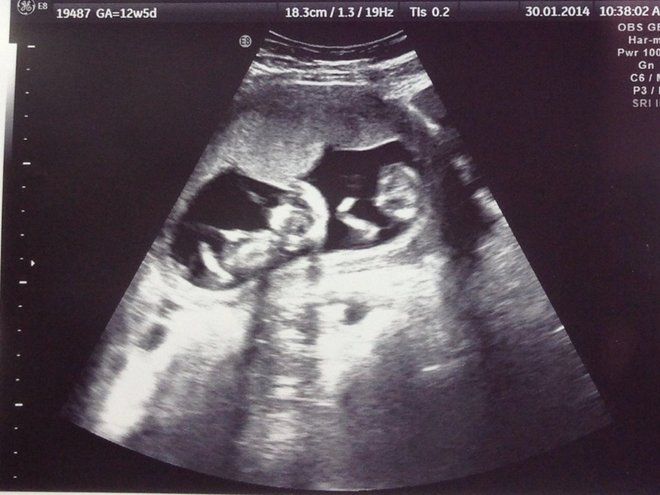
Your twins can open and close their eyes. Your twins may be able open and close their eyes and sense changes in light. However, they will spend most of their time sleeping with eyelids closed.
Brains growing. Your babies’ brains are growing quickly at this stage of your pregnancy. Parts of the brain can now control body temperature, so your twins are not solely dependent just the temperature of the amniotic fluid to stay warm.
Your twins have finished their major development. By now, your babies will have finished most of their development and start to gain weight rapidly. At 32 weeks, your babies may start to shed their lanugo, the fine hair that covered their bodies.
33 to 36 Weeks
As mentioned above, those who are pregnant with twins can expect an earlier delivery. So, at this point in your twin pregnancy, you’re in the home stretch, and your babies know it!
The lungs are preparing to breathe.
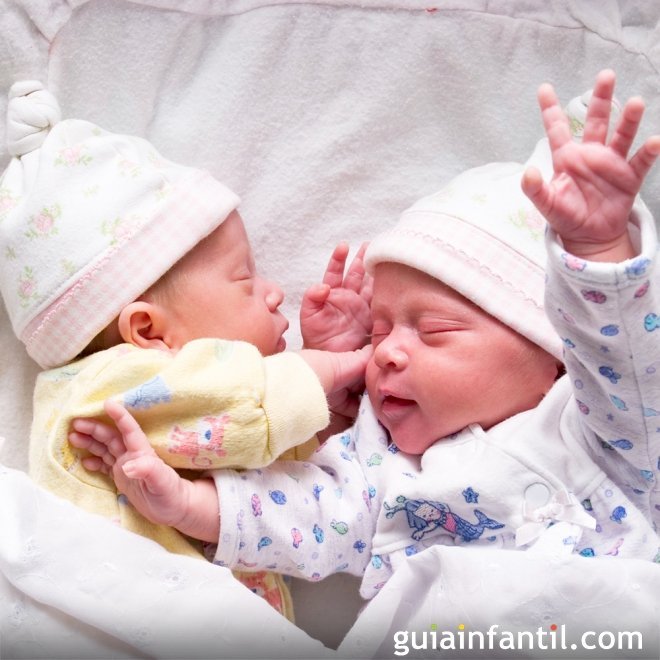 Your babies’ lungs are maturing and preparing to breathe outside the womb.
Your babies’ lungs are maturing and preparing to breathe outside the womb. Twins gaining weight. During the last few weeks of your pregnancy, your twins will continue to build fat layers and put on weight. Most twins will be born smaller than singleton babies, weighing on average 5.1 pounds.
Getting ready for birth. Most women give birth between 37 and 42 weeks. However, if you’re expecting twins, you could give birth as early as 35 weeks, so keep an eye out for any signs of labor and discuss your options with your healthcare provider.
In the video below, watch one of our partner nurses offer advice on when to head to the hospital as the signs of labor begin.
The Bottom Line
Were you not expecting two for the price of one? After the initial surprise of a twin pregnancy, it’s completely natural to feel overjoyed, overwhelmed, or even shocked for a while! But, knowing the symptoms of a twin pregnancy and what awaits you week by week can help you feel confident along the way and offer some peace of mind. In some ways, a twin pregnancy isn’t that different than a singleton one. You’ll have a larger baby bump, of course, and you may feel more tired or experience other symptoms to a greater degree; but you’ll make similar progress as the weeks and months go by and your due date approaches.
However, to summarize a few important differences, a twin pregnancy might include
In some ways, a twin pregnancy isn’t that different than a singleton one. You’ll have a larger baby bump, of course, and you may feel more tired or experience other symptoms to a greater degree; but you’ll make similar progress as the weeks and months go by and your due date approaches.
However, to summarize a few important differences, a twin pregnancy might include
more checkups with your health provider
increased weight gain
an earlier delivery
your twins needing a little extra time in the hospital
higher risk for cesarean delivery and premature birth.
Think of it this way: though a twin pregnancy comes with its share of challenges, having twins means there are two babies to love and bring joy into your life! Hang in there and enjoy the journey as much as possible. You’ll be amazed to discover how your heart will grow twice as much!
What to expect when you’re expecting twins – or more | Your Pregnancy Matters
“Do you see what I see?”
As a parent of multiples, I know the excitement that comes with such news; as an obstetrician, I also know the extra cares and concerns that accompany that joy.
I was a resident in my fourth year of training in Obstetrics and Gynecology when these words were spoken by a radiologist doing my ultrasound. And, yes, I could see the two sacs and the two heartbeats on the screen. Twins!
While you shouldn’t be needlessly alarmed, you need to know that some pregnancy complications are more common in women carrying twins, including:
- Miscarriage
- Nausea and vomiting
- Birth defects
- Lower birth weights for the babies
- High blood pressure during your pregnancy
- Early delivery (both because of spontaneous labor or the development of complications)
- Additional bleeding during delivery
I spend a lot of time talking with mothers of twins and more about these complications. The amount of information can be overwhelming, so I often break it down by gestational age with my patients. There is no point in worrying over something that is probably weeks away from happening.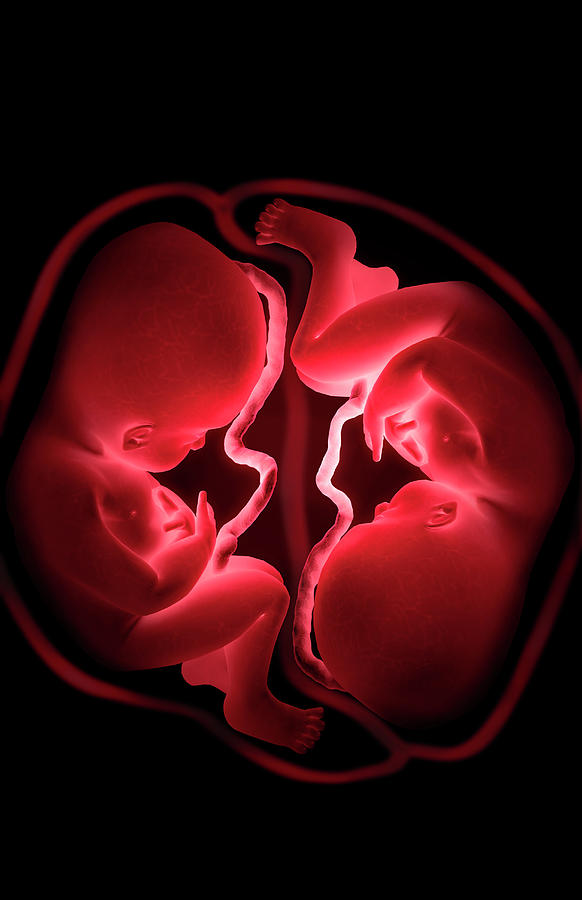
In this post, I will address some of the most common questions that relate to the first trimester, and clarify some misconceptions.
Identical or fraternal? One placenta or two?
It’s important to try to distinguish what type of twin pregnancy you have, because potential pregnancy complications change depending on that information. More specifically, complications are different depending on whether there is one placenta shared by the two babies, or if each baby is in its own sac with its own placenta.
Your family history may help us determine if the twins are fraternal (two eggs are fertilized) or identical (one egg is fertilized and then splits after fertilization). Fraternal twins run in families. In some populations, as many as one in 20 pregnancies may be a twin pregnancy. Identical twins occur in one in 250 pregnancies, a statistic that is pretty constant around the world.
Other factors that influence your chance for fraternal twins include fertility treatments, older age, and increased body mass index. Patients who have had a fertility treatment that involved more than one egg often assume their twins must be fraternal. That’s not true. Patients who undergo fertility treatment also have an increased chance of identical twins.
Patients who have had a fertility treatment that involved more than one egg often assume their twins must be fraternal. That’s not true. Patients who undergo fertility treatment also have an increased chance of identical twins.
The best way to determine the type of twin gestation is a first trimester ultrasound.
In the picture with this post, you can see what early ultrasounds look like for different types of twins. On the top image, the arrow points to a very thick membrane between the two sacs; this is how a pregnancy with two separate sacs and two separate placentas appears. However, identical twins that split within the first 72 hours after fertilization will look exactly the same as fraternal twins on ultrasound. Sometimes, in the case of two boys or two girls, we won’t know for sure until after the babies are born and we do further testing.
In the bottom image, the arrow points to a very thin white line between the two sacs, indicating identical twins that are in separate sacs sharing one placenta. Occasionally we won’t be able to see a dividing line or membrane which tells us the identical twins are together in the same sac.
Occasionally we won’t be able to see a dividing line or membrane which tells us the identical twins are together in the same sac.
Eat well, take supplements
We want you to gain more weight with twins – 40 to 50 pounds over the course of the pregnancy, compared with the 25 to 35 pounds we expect a woman with a normal BMI to gain. Like all pregnant women, you’ll also need to take an iron supplement to prevent anemia. But this is especially important in women carrying multiples since the risk of anemia and blood loss at delivery is higher. Hopefully you’ve been taking a folate supplement before getting pregnant; you’ll want to continue this as well to help prevent anemia.
I know from experience that thinking about eating and taking vitamins and supplements can be hard to do in the first trimester. From the beginning of my pregnancy carrying twins, I suffered from bad nausea and vomiting. Excessive nausea and vomiting can be associated with other pregnancy abnormalities, so I thought this might be the cause for my illness.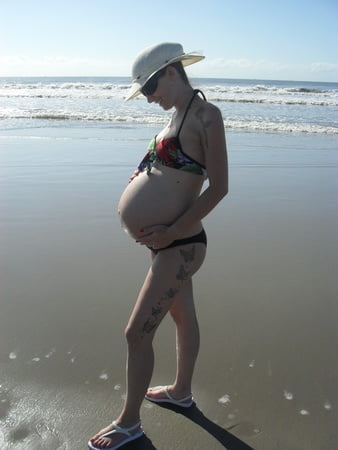 Fortunately, I had another, much nicer reason for being extra sick! Check out Dr. Nelson’s suggestions to help manage morning sickness symptoms. And know that in the event of severe morning sickness more powerful drugs may be necessary to control your symptoms.
Fortunately, I had another, much nicer reason for being extra sick! Check out Dr. Nelson’s suggestions to help manage morning sickness symptoms. And know that in the event of severe morning sickness more powerful drugs may be necessary to control your symptoms.
Down syndrome screening
All pregnant patients seen in their first trimester of pregnancy should think carefully about Down syndrome screening. But screening and diagnostic testing become more complicated with two fetuses, so you need to talk with your obstetrician about options. It’s also possible only one baby could be affected, making further decisions regarding the pregnancy difficult.
Coming next week
You’ve made it through the first trimester of your multiples pregnancy. What’s next? We’ll talk about ultrasounds, screening for birth defects, and the possibility of an early delivery in next week’s post on the Your Pregnancy Matters blog.
Multiple pregnancy
Author: Mikheeva Natalia Grigoryevna, Malyshok magazine
A multiple pregnancy is a pregnancy in which two or more fetuses develop simultaneously in the uterus. Multiple pregnancy occurs in 0.4 - 1.6% of all pregnancies. Recently, there has been an obvious trend towards an increase in the incidence of such pregnancies due to the active use of assisted reproduction technologies, including in vitro fertilization (IVF).
Multiple pregnancy occurs in 0.4 - 1.6% of all pregnancies. Recently, there has been an obvious trend towards an increase in the incidence of such pregnancies due to the active use of assisted reproduction technologies, including in vitro fertilization (IVF).
Types of multiple pregnancies
Children born in multiple pregnancies are called TWINS. There are two main types of twins: monozygotic (identical, homologous, identical, similar) and dizygotic (fraternal, heterologous, different). African countries have the highest twin birth rate, Europe and the USA have an average rate, and Asian countries have a low rate.
Dizygotic (fraternal) twins are more common (in 66-75% of all twins). The birth rate of dizygotic twins varies from 4 to 50 per 1000 births. Dizygotic twins occur when two separate eggs are fertilized. The maturation of two or more eggs can occur both in one ovary and in two. The predisposition to develop dizygotic twins may be maternally inherited. Dizygotic twins can be either same-sex or opposite-sex, they look like each other like ordinary brothers and sisters. With fraternal twins, two placentas are always formed, which can be very close, even touching, but they can always be separated. Two fruit spaces (i.e., fetal bladders or two “houses”) are separated from each other by a septum consisting of two chorionic and two amniotic membranes. Such twins are called dizygotic dichorionic diamniotic twins.
Dizygotic twins can be either same-sex or opposite-sex, they look like each other like ordinary brothers and sisters. With fraternal twins, two placentas are always formed, which can be very close, even touching, but they can always be separated. Two fruit spaces (i.e., fetal bladders or two “houses”) are separated from each other by a septum consisting of two chorionic and two amniotic membranes. Such twins are called dizygotic dichorionic diamniotic twins.
Monozygotic (identical) twins are formed as a result of the separation of one fetal egg at various stages of its development. The frequency of birth of monozygotic twins is 3-5 per 1000 births. The division of a fertilized egg into two equal parts can occur as a result of a delay in implantation (immersion of the embryo in the uterine mucosa) and oxygen deficiency, as well as due to a violation of the acidity and ionic composition of the medium, exposure to toxic and other factors. The emergence of monozygotic twins is also associated with the fertilization of an egg that had two or more nuclei. If the separation of the fetal egg occurs in the first 3 days after fertilization, then monozygotic twins have two placentas and two amniotic cavities, and are called monozygotic diamniotic dichoriones (Fig. A). If the division of the ovum occurs between 4 - 8 days after fertilization, then two embryos will form, each in a separate amniotic sac. Two amniotic sacs will be surrounded by a common chorionic membrane with one placenta for two. Such twins are called monozygotic diamniotic monochorionic twins (Fig. B). If division occurs by 9- 10th day after fertilization, then two embryos are formed with a common amniotic sac and placenta. Such twins are called monozygotic monoamniotic monochorionic (Fig. B) If the egg is separated at a later date on the 13th - 15th day after conception, the separation will be incomplete, which will lead to the appearance of conjoined (undivided, Siamese) twins. This type is quite rare, approximately 1 observation in 1500 multiple pregnancies or 1: 50,000 - 100,000 newborns.
If the separation of the fetal egg occurs in the first 3 days after fertilization, then monozygotic twins have two placentas and two amniotic cavities, and are called monozygotic diamniotic dichoriones (Fig. A). If the division of the ovum occurs between 4 - 8 days after fertilization, then two embryos will form, each in a separate amniotic sac. Two amniotic sacs will be surrounded by a common chorionic membrane with one placenta for two. Such twins are called monozygotic diamniotic monochorionic twins (Fig. B). If division occurs by 9- 10th day after fertilization, then two embryos are formed with a common amniotic sac and placenta. Such twins are called monozygotic monoamniotic monochorionic (Fig. B) If the egg is separated at a later date on the 13th - 15th day after conception, the separation will be incomplete, which will lead to the appearance of conjoined (undivided, Siamese) twins. This type is quite rare, approximately 1 observation in 1500 multiple pregnancies or 1: 50,000 - 100,000 newborns.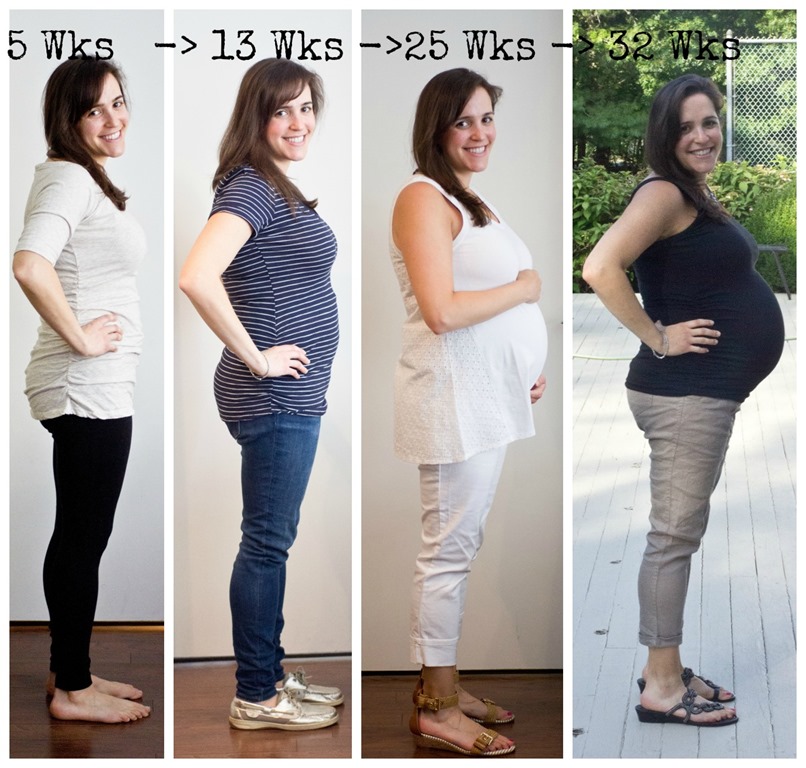 Monozygotic twins are always the same sex, have the same blood type, have the same eye color, hair, skin texture of the fingers, and are very similar to each other.
Monozygotic twins are always the same sex, have the same blood type, have the same eye color, hair, skin texture of the fingers, and are very similar to each other.
Twin births occur once in 87 births, triplets - once in 87 2 (6400) twins, quadruples - once in 87 3 (51200) triplets, etc. (according to the Gallin formula). The origin of triplets, quadruplets, and more twins varies. So, triplets can be formed from three separate eggs, from two or one egg. They can be monozygotic and heterozygous. Quadruples can also be identical and fraternal.
Features of the course of multiple pregnancy
In case of multiple pregnancies, the woman's body is subject to increased requirements. All organs and systems function with great tension. In connection with the displacement of the diaphragm by the enlarged uterus, the activity of the heart becomes difficult, shortness of breath, fatigue occur. Enlargement of the uterus, especially towards the end of pregnancy, leads to compression of the internal organs, which is manifested by impaired bowel function, frequent urination, and heartburn. Almost 4-5 times more often there is the development of preeclampsia, which is characterized by an earlier onset, a protracted and more severe clinical course, often combined with acute pyelonephritis of pregnant women. Due to the increased need and consumption of iron, iron deficiency anemia often develops in pregnant women. Significantly more often than with a singleton pregnancy, complications such as bleeding during pregnancy and childbirth, anomalies in labor, and a low location of the placenta are observed. Often, with multiple pregnancies, abnormal positions of the fetus occur. One of the most common complications in multiple pregnancy is its premature termination. Preterm birth is observed in 25-50% of cases of such pregnancies.
Almost 4-5 times more often there is the development of preeclampsia, which is characterized by an earlier onset, a protracted and more severe clinical course, often combined with acute pyelonephritis of pregnant women. Due to the increased need and consumption of iron, iron deficiency anemia often develops in pregnant women. Significantly more often than with a singleton pregnancy, complications such as bleeding during pregnancy and childbirth, anomalies in labor, and a low location of the placenta are observed. Often, with multiple pregnancies, abnormal positions of the fetus occur. One of the most common complications in multiple pregnancy is its premature termination. Preterm birth is observed in 25-50% of cases of such pregnancies.
The development of term twins is normal in most cases. However, their body weight is usually less (by 10% or more) than in singleton pregnancies. With twins, the weight of children at birth less than 2500 g is observed in 40-60%. The low weight of twins is most often due to insufficiency of the uteroplacental system, which is not able to adequately provide several fetuses with nutrients, trace elements and oxygen.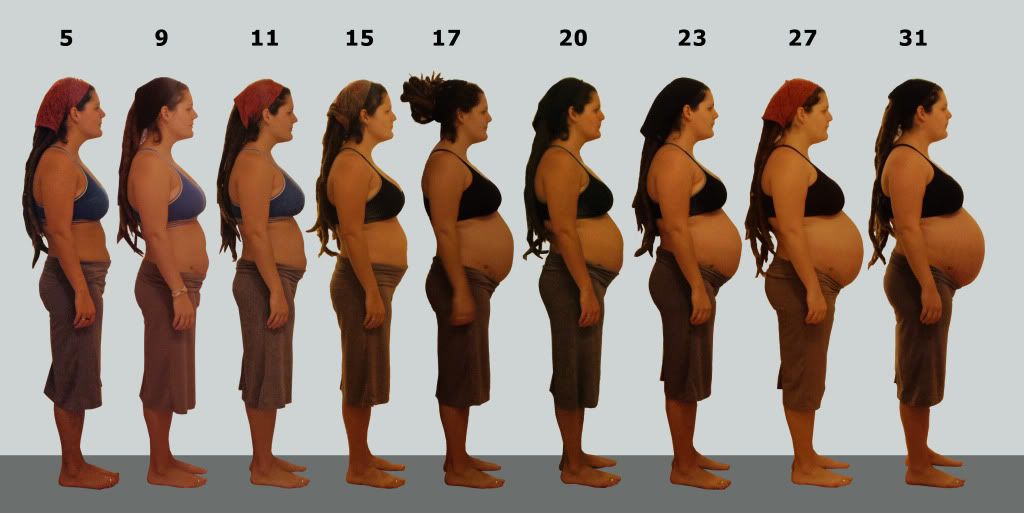 The consequence of this is a delay in the development of the fetus, which is a common occurrence in multiple pregnancies. The mass of twins, respectively, decreases in proportion to their number (triplets, quadruplets, etc.).
The consequence of this is a delay in the development of the fetus, which is a common occurrence in multiple pregnancies. The mass of twins, respectively, decreases in proportion to their number (triplets, quadruplets, etc.).
With monochorionic twins in the placenta, anastomoses are often formed between the vascular systems of the fetus, which can lead to a serious complication - the syndrome of feto-fetal transfusion. In this case, there is a redistribution of blood from one fetus to another, the so-called "stealing". The severity of feto-fetal transfusion (mild, moderate, severe) depends on the degree of redistribution of blood through the anastomoses, which vary in size, number and direction.
Diagnosis in multiple pregnancy
The most reliable method for diagnosing multiple pregnancies is ultrasound, which allows not only early diagnosis of multiple pregnancies, but also to determine the position and presentation of fetuses, localization, structure and number of placentas, the number of amniotic cavities, the volume of amniotic fluid, congenital malformations and antenatal fetal death, the state of the fetus from a functional point of view, the nature of the uteroplacental and fetal-placental blood flow.
In multiple pregnancies, due to the higher risk of complications, ultrasound monitoring is performed more frequently than in singleton pregnancies. With dizygotic twins, about once every 3-4 weeks, with monozygotic twins - once every 2 weeks.
In addition, examinations and control of clinical tests are carried out with great care, and CTG is regularly recorded from 28 weeks of pregnancy.
Birth management
Indications for caesarean section associated with multiple pregnancies are triplets (quadruple), the transverse position of both or one of the fetuses, breech presentation of both fetuses or the first of them, and not associated with multiple pregnancy - fetal hypoxia, anomalies labor activity, prolapse of the umbilical cord, extragenital pathology of the mother, severe gestosis, placenta previa and abruption, etc.
-
ECO
In the department of assisted reproductive technologies of the Maternity Hospital No. 2
2
, IVF is performed at the expense of the Republican budget for couples
who have received a positive decision from the Minsk city or regional commissions to provide one free IVF attempt.
No drug supply problem. There is no waiting list. -
Farewoman
-
Individual care for patients
-
Ultrasound diagnostics
- Pregnant women often complain of fatigue and shortness of breath, which increases towards the end of pregnancy.
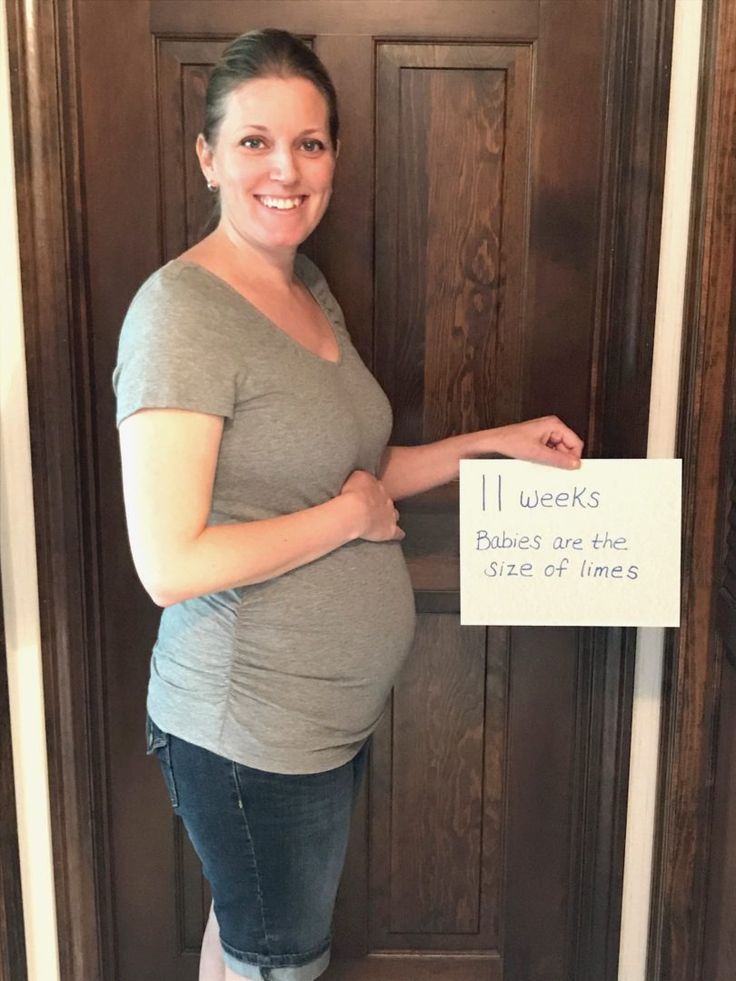 The cause of shortness of breath is a difficulty in the activity of the heart due to a significant displacement of the diaphragm by the bottom of the uterus, the size of which is larger in multiple pregnancy than in singleton.
The cause of shortness of breath is a difficulty in the activity of the heart due to a significant displacement of the diaphragm by the bottom of the uterus, the size of which is larger in multiple pregnancy than in singleton. - Often there is a dilation of the veins of the lower extremities. By the end of pregnancy, there is often an increase in the urge to urinate due to the pressure of a large fetus on the bladder.
- Pregnant women often complain of heartburn and constipation.
- In multiple pregnancies, toxicosis occurs more often than in singleton pregnancies: vomiting, salivation, edema, nephropathy, eclampsia.
- With twins, polyhydramnios of one of the fetuses is often found, which leads to a sharp increase and overstretching of the uterus, shortness of breath, tachycardia and other disorders. Polyhydramnios is more common in one of the identical twins. In some cases, the polyhydramnios of one twin is accompanied by an oligohydramnios of the other fetus.

- Premature termination of multiple pregnancies often occurs.
- With twins, preterm birth is observed in at least 25% of women.
- Triplets are more likely to miscarry than twins. The greater the number of gestated fetuses, the more often preterm births are observed.
- Development of term twins is normal in most cases. However, their body weight is usually less than that of single fetuses. Often there is a difference in body weight of twins by 200-300 g, and sometimes more.
- Uneven development of twins is associated with unequal intake of nutrients from a single placental circulation.
- Often there is a difference not only in weight, but also in the length of the body of the twins. In connection with this, the theory of supergenesis (superfoetatio) was put forward. Proponents of this hypothesis believe that fertilization of eggs of different ovulation periods is possible, i.e., the onset of a new pregnancy in the presence of an already existing, previously occurring, pregnancy.
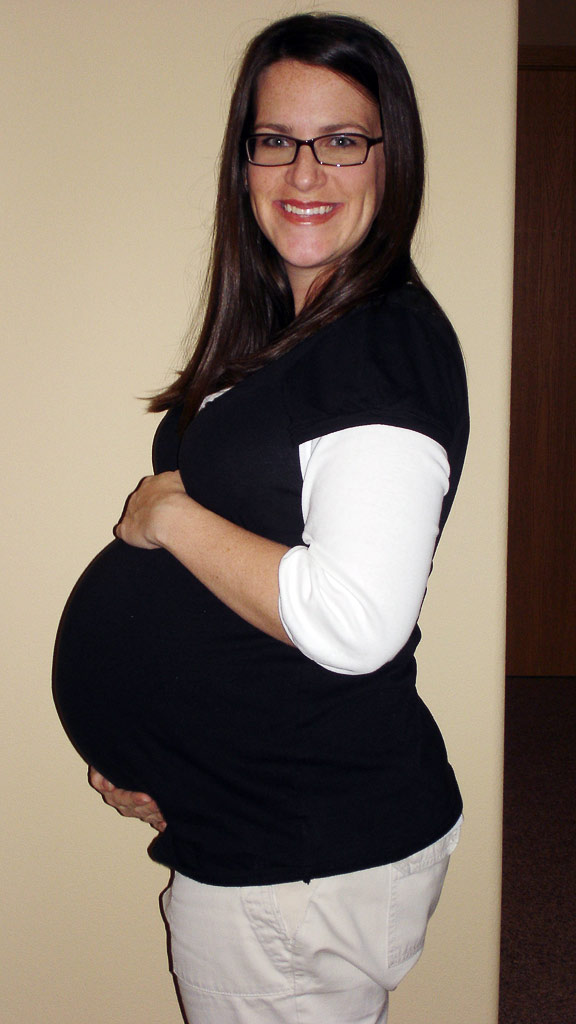
- Due to the uneven delivery of nutrients and oxygen, a significant developmental disorder and even death of one of the twins can occur. This is more commonly seen in identical twins. The dead fetus is squeezed by the second, well-growing fetus, the amniotic fluid is absorbed, the placenta undergoes regression. The compressed mummified fetus ("paper fetus") is released from the uterus along with the placenta after the birth of a live twin. Polyhydramnios of one fetus, which occurs during multiple pregnancies, often also prevents the other twin from developing correctly. With pronounced polyhydramnios, certain anomalies in the development of the fetus, which grows with an excess of amniotic fluid, are often observed. Rarely, fused twins are born (fusion can be in the head, chest, abdomen, pelvis) and twins with other malformations.
- The position of the fetuses in the uterine cavity in most cases (about 90%) is normal. In the longitudinal position, different presentation options are observed: both fetuses are presented with the head, both with the pelvic end, one with the head, and the other with the pelvic end.
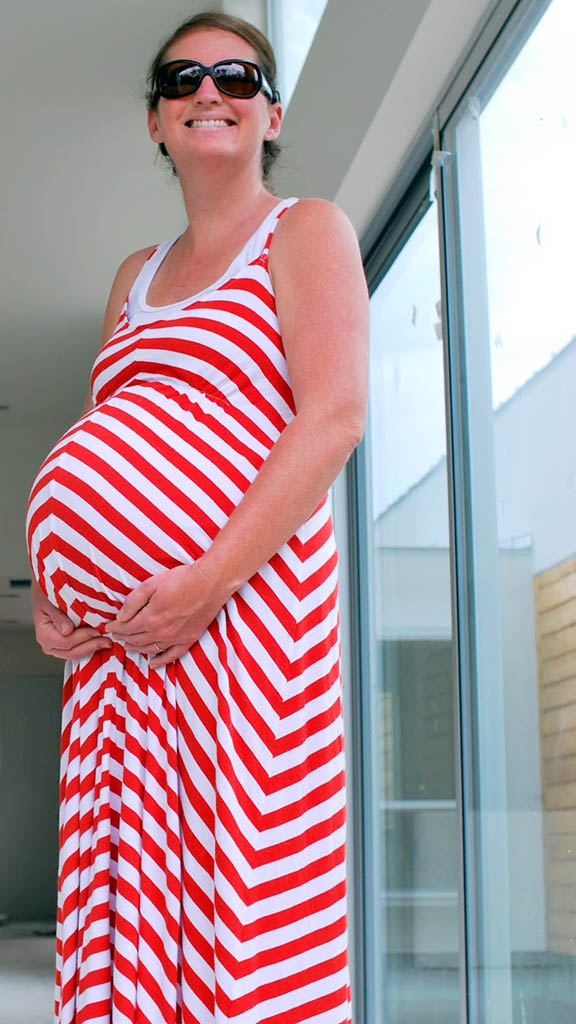 With longitudinal presentation, one fetus may be behind the other, which makes diagnosis difficult. Less commonly observed is the longitudinal position of one fetus and the transverse position of the other. The most rare is the transverse position of both twins.
With longitudinal presentation, one fetus may be behind the other, which makes diagnosis difficult. Less commonly observed is the longitudinal position of one fetus and the transverse position of the other. The most rare is the transverse position of both twins. - The position of the twins in the uterus, both fetuses are presented with the head, one fetus is presented with the head, the second - with the pelvic end, both fetuses are in the transverse position
- In case of multiple pregnancies, women are taken into special account and carefully monitored. When the earliest signs of complications appear, the pregnant woman is sent to the pregnancy pathology department of the maternity hospital. Given the frequent occurrence of preterm birth, it is recommended that a pregnant woman with twins be sent to the maternity hospital 2 to 3 weeks before delivery, even in the absence of complications.
- The enlargement of the uterus in multiple pregnancies occurs faster than in pregnancy with one fetus, so the size of the uterus does not correspond to the gestational age. The bottom of the uterus is usually high, especially at the end of pregnancy, the circumference of the abdomen during this period reaches 100-110 cm or more.
- The following signs are unstable and not sufficiently reliable: a) deepening of the uterine fundus (saddle uterus), the formation of which is associated with protrusion of the corners of the uterus with large parts of the fetus; b) the presence of a longitudinal depression on the anterior wall of the uterus, which is formed as a result of the fruits that are in a longitudinal position adjacent to each other; c) the presence of a horizontal groove on the anterior wall of the uterus with the transverse position of the fetus.
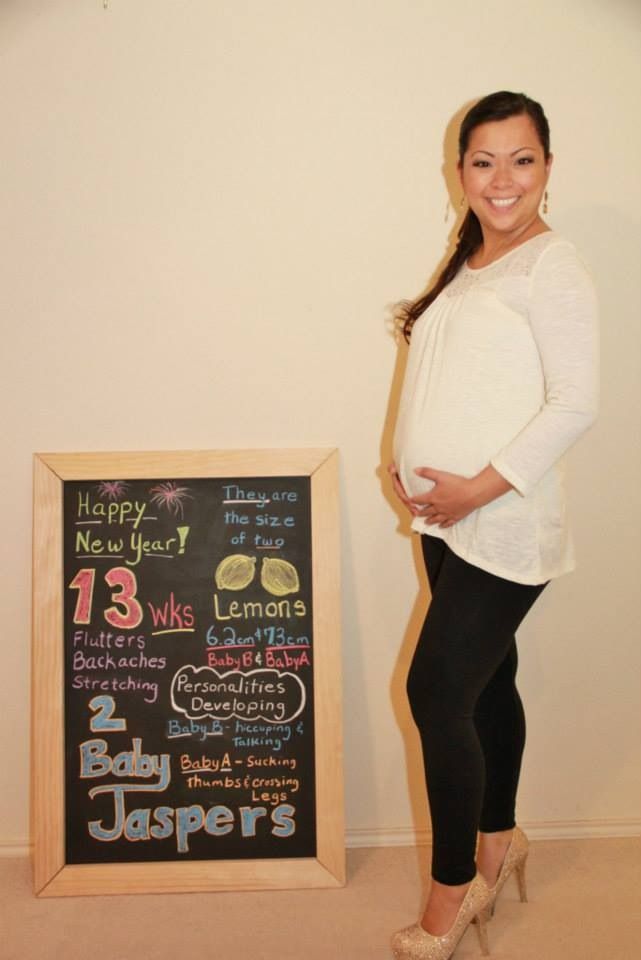
- The small size of the presenting head with a significant volume of the pregnant uterus and the high standing of its bottom also make it possible to suspect a multiple pregnancy. The presence of this sign is explained by the fact that the study determines the head of one and the pelvic end (in the bottom of the uterus) of another fetus, which lies slightly higher.
- Feeling the movement of the fetus in different places and probing parts of the fetus in different parts of the abdomen (both on the right and on the left) also indicate multiple pregnancies.
Curious facts are
0
, how many are the Geminis? up to 80 million pairs of twins.
The number of twins born in relation to the total number of newborns in different countries and on different continents is different, but in general the trend is such that it continues to grow. Compared with the 60s, the percentage of twins has increased from 1.18 to 2.78, that is, almost 2.5 times.
The largest number of children
The largest number of children born to one mother, according to official data, is 69. According to reports made in 1782, between 1725 and 1765.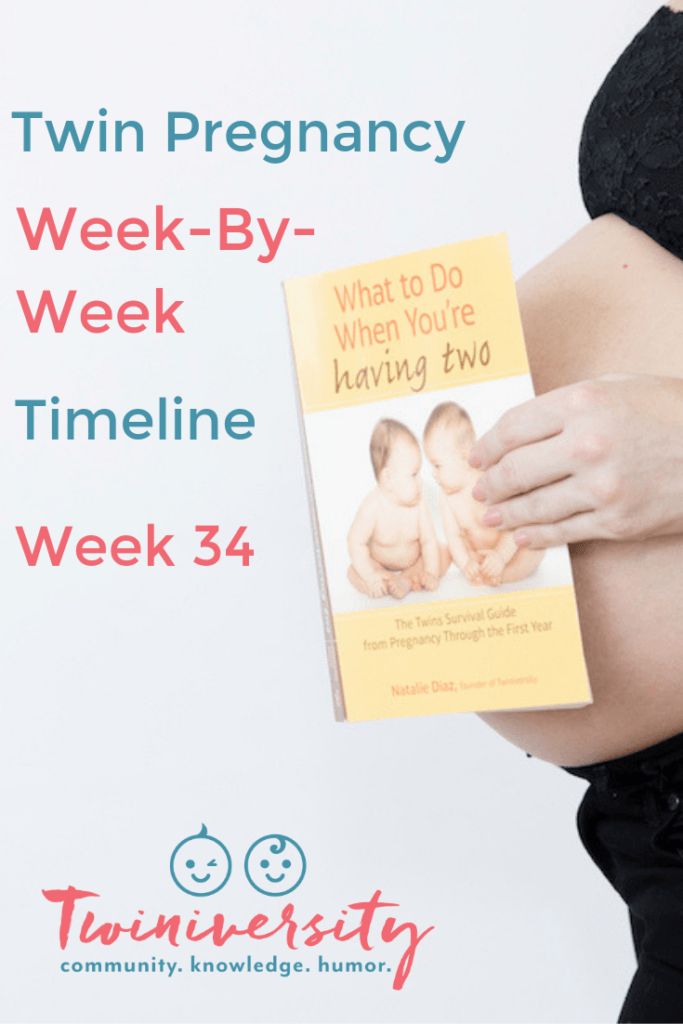 The wife of a Russian peasant Fyodor Vasiliev gave birth 27 times, giving birth to twins 16 times, triplets 7 times and 4 twins 4 times. Of these, only 2 children died in infancy.
The wife of a Russian peasant Fyodor Vasiliev gave birth 27 times, giving birth to twins 16 times, triplets 7 times and 4 twins 4 times. Of these, only 2 children died in infancy.
The most prolific mother of our contemporaries is considered to be Leontina Albina (or Alvina) of San Antonio, Chile, who at 1943-81 years gave birth to 55 children. As a result of the first 5 pregnancies, she gave birth to triplets, and exclusively male.
Most birthed
The record 38 births are said to be Elizabeth Greenhillies Abbots-Langley, c. Hertfordshire, UK. She had 39 children - 32 daughters and 7 sons.
The largest number of multiple births in one family
Maddalena Pomegranate from Italy (b. 1839) had triplets born 15 times.
There is also information about the birth on May 29, 1971 in Philadelphia, Pennsylvania, USA, and in May 1977 in Bagarhat, Bangladesh, 11 twins. In both cases, no child survived.
Most fertile pregnancies
Dr. Gennaro Montanino, Rome, Italy, claimed to have removed, in July 1971, the embryos of 10 girls and 5 boys from the uterus of a 35-year-old woman who was 4 months pregnant. This unique case of 15-fertility was the result of infertility pills.
Gennaro Montanino, Rome, Italy, claimed to have removed, in July 1971, the embryos of 10 girls and 5 boys from the uterus of a 35-year-old woman who was 4 months pregnant. This unique case of 15-fertility was the result of infertility pills.
9 children - the largest number in one pregnancy - were born on June 13, 1971 by Geraldine Broadrick in Sydney, Australia. 5 boys and 4 girls were born: 2 boys were stillborn, and none of the rest survived more than 6 days.
The birth of 10 twins (2 boys and 8 girls) is known from reports from Spain (1924), China (1936) and Brazil (April 1946).
The father with many children
The largest father in the history of Russia is Yakov Kirillov, a peasant from the village of Vvedensky, who in 1755 was presented to the court in connection with this (he was then 60 years old). The first wife of a peasant gave birth to 57 children: 4 times four, 7 times three, 9once twice and 2 times once. The second wife gave birth to 15 children. Thus, Yakov Kirillov had 72 children from two wives.
Thus, Yakov Kirillov had 72 children from two wives.
Longest Birth Intervals for Multiple Pregnancies
Peggy Lynn of Huntington Pennsylvania, USA, gave birth to a girl, Hanna, on November 11, 1995, and the second of the twins, Erika, only 84 days later (February 2, 1996).
Siamese twins
United twins became known as "Siamese" after Chang and Eng Bunkers were born fused in the area of the sternum on May 11, 1811 in the Maeklong region of Siam (Thailand). They married Sarah and Adelaide Yates of pc. North Carolina, USA, and had 10 and 12 children, respectively. They died in 1874, and with a difference of 3 hours.
The science of twins - gemellology.
"Secret language"
Twins often talk to each other in a language that others do not understand. This phenomenon is called cryptophasia.
Left-handed twins
18-22% of left-handed twins (for non-twins this percentage is 10).
articles from specialists of the clinic "Mother and Child"
Arifullina Claudia Viktorovna
Gastroenterologist
Clinical Hospital "AVICENNA" GC "Mother and Child"
There is data on the frequency of twins in case of anomalies in the development of the uterus, characterized by its bifurcation (bicornuate uterus, having a septum in the cavity, etc. ). The cause of polyembryony may be the separation of blastomeres (in the early stages of crushing), resulting from hypoxia, cooling, acidity and ionic composition of the medium, exposure to toxic and other factors. Multiple pregnancy can occur: as a result of the fertilization of two or more simultaneously mature eggs, as well as the development of two or more embryos from one fertilized egg.
). The cause of polyembryony may be the separation of blastomeres (in the early stages of crushing), resulting from hypoxia, cooling, acidity and ionic composition of the medium, exposure to toxic and other factors. Multiple pregnancy can occur: as a result of the fertilization of two or more simultaneously mature eggs, as well as the development of two or more embryos from one fertilized egg.
Twins formed from two (three, etc.) eggs are called dizygotic (polyzygotic), those arising from one are called identical. The origin of fraternal twins (polyzygotic twins): the simultaneous maturation (and ovulation) of two or more follicles in one ovary is possible. There may be maturation of two or more follicles and ovulation in both ovaries.
A third way of the origin of fraternal (multi-ovular) twins is possible - the fertilization of two or more eggs that have matured in one follicle. The origin of identical twins: most often, the occurrence of identical twins is associated with the fertilization of an egg that has two or more nuclei.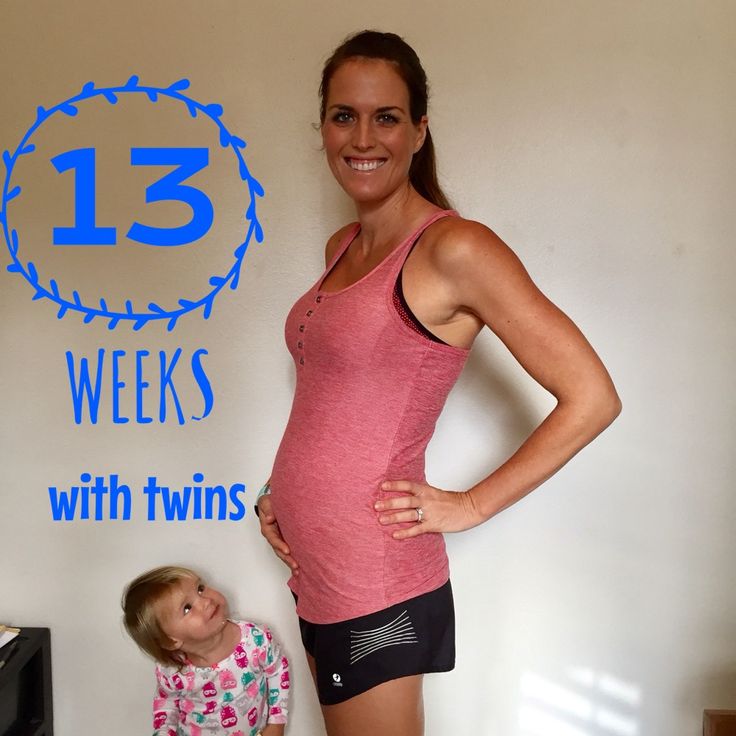 a single embryonic germ in the stage of crushing is divided into two parts; from each part an embryo (fruit) is formed. Twin twin. Fertilized eggs develop on their own. After penetration into the mucous membrane, each embryo develops its own aqueous and fleecy membranes; in the future, each twin forms its own placenta with an independent network of vessels, each fetal egg, except for the chorion and amnion, has an independent capsular membrane (decidua capsularis). In some cases, anastomoses are formed between the vessels of independent placentas. Twins can be same-sex (both boys or both girls) or different-sex (boy and girl). Their blood type can be the same or different. Identical twin. Identical twins have a common capsular and fleecy membrane and a common placenta; the vessels (both arterial and venous) of both twins in the placenta communicate with the help of numerous anastomoses. The water membrane of each twin is separate, the septum between the fetal sacs consists of two water membranes (biamniotic twins).
a single embryonic germ in the stage of crushing is divided into two parts; from each part an embryo (fruit) is formed. Twin twin. Fertilized eggs develop on their own. After penetration into the mucous membrane, each embryo develops its own aqueous and fleecy membranes; in the future, each twin forms its own placenta with an independent network of vessels, each fetal egg, except for the chorion and amnion, has an independent capsular membrane (decidua capsularis). In some cases, anastomoses are formed between the vessels of independent placentas. Twins can be same-sex (both boys or both girls) or different-sex (boy and girl). Their blood type can be the same or different. Identical twin. Identical twins have a common capsular and fleecy membrane and a common placenta; the vessels (both arterial and venous) of both twins in the placenta communicate with the help of numerous anastomoses. The water membrane of each twin is separate, the septum between the fetal sacs consists of two water membranes (biamniotic twins).
Identical twins always belong to the same sex (both boys or both girls), look alike, have the same blood group.
In fraternal twins, the membranes in the septum are arranged as follows: amnion - chorion, chorion - amnion; with monozygotic amnion-amnion.
Important signs for the diagnosis are: blood type (and other blood factors), eye color, hair color, skin texture of the fingertips, shape and location of teeth. In identical twins, these signs are completely the same. Fraternal twins share the same similarities as normal siblings.
MULTIPLE PREGNANCY
With multiple pregnancy, increased demands are made on the woman's body: the cardiovascular system, lungs, liver, nights and other organs function with great stress. In this regard, multiple pregnancies are more difficult than single pregnancies.
RECOGNITION OF MULTIPLE PREGNANCY
Diagnosis of multiple pregnancy often presents significant difficulties, especially in its first half.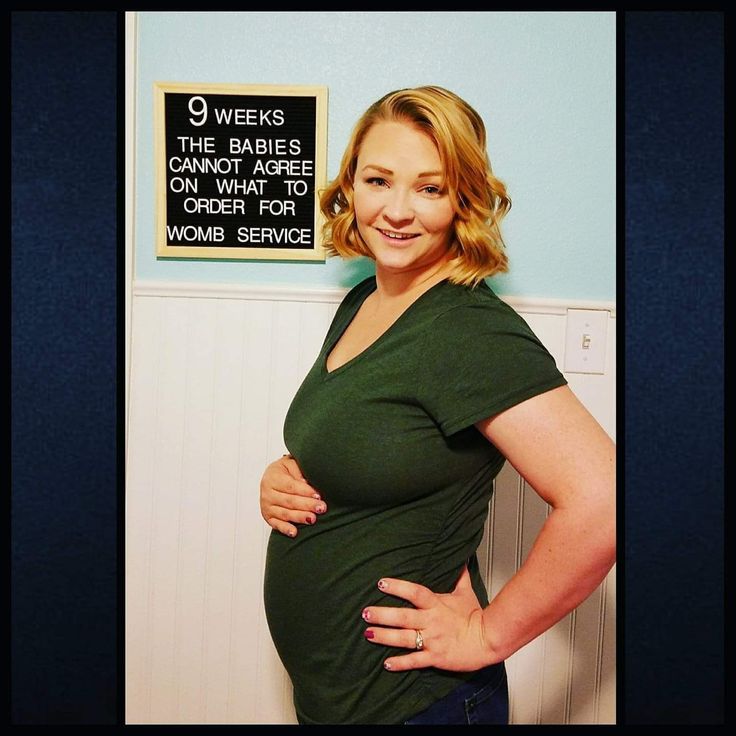 In the second half, towards the end of pregnancy, the recognition of twins (triplets) is facilitated. However, diagnostic errors occur during the study at the end of pregnancy and even during childbirth.
In the second half, towards the end of pregnancy, the recognition of twins (triplets) is facilitated. However, diagnostic errors occur during the study at the end of pregnancy and even during childbirth.
When recognizing a multiple pregnancy, the following signs are taken into account:
Make an appointment
to the doctor - Arifullina Claudia Viktorovna
Clinical Hospital "AVICENNA" GC "Mother and Child"
GastroenterologyPediatric Gastroenterology
By clicking on the submit button, I consent to the processing of personal data
Attention! Prices for services in different clinics may vary. To clarify the current cost, select a clinic
Clinical Hospital "AVICENNA" Group of Companies "Mother and Child"Novosibirsk Center for Reproductive Medicine
All directionsGynecological proceduresSpecialist consultations (adults)Specialist consultations (children)Laboratory of molecular geneticsGeneral clinical studiesProcedure roomTherapeutic studiesUltrasound examinations for adults
.







